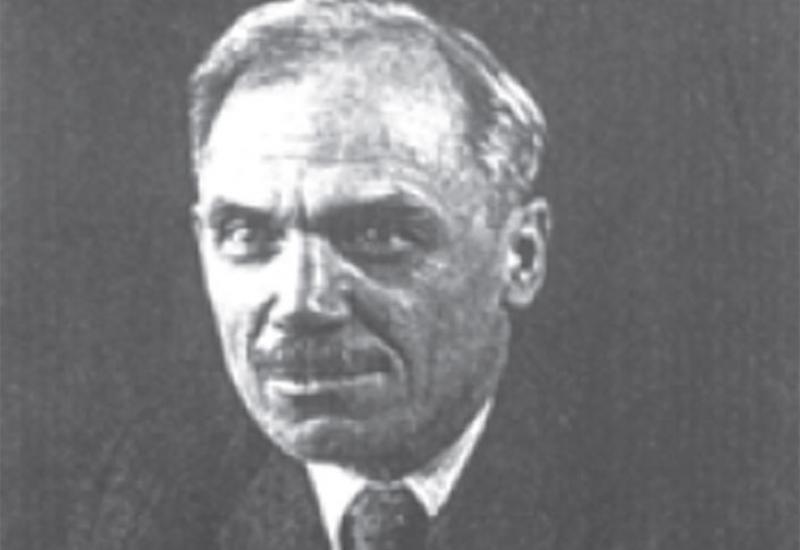Mykola Yuliyovych Vagner was born on 11 (24) January 1893 in Saint Petersburg in the family of well-known zoologist Yuliy M. Vagner. In 1898, after the moving to Kyiv Yuliy M. Vagner started working in Kyiv Polytechnic Institute. In the autumn of 1912, Mykola Vagner became a student of the Department of Agriculture in KPI.
Starting from the second year of studying Mykola Vagner worked within his professional interest at the botany laboratory of the institute under the supervision of a leading light in science of that time - S. G. Navashyn and G. A. Levitsky. He went in for cytology. In April 1914, gifted student delivered in Kyiv Society of Nature Researchers the report about chondriosomes in pollen cells. This work was published in the Society proceedings in the following year. In the summer of 1917, Mykola Vagner discharged duties of assisstant of governorate entomologist in Tavria governorate. In addition to this, he systematized local flora herbarium of Crimea in Simferopol museum of Tavria. Mykola Vagner graduated from KPI with first-class honours in May 1918 and earned the title of agricultural scientist. In September of that year, Council of Kyiv Polytechnic Institute upheld a decision to include him in teaching team. He began teaching plant morphology and plant taxonomy, became a leader of some additional student groups – worked for hire.
I found in archives an interesting original document: Mykola Vagner’s certificate, dated 20 January 1920, № 98 with personal handwritten signature of Ahatanhel Krymsky, permanent secretary of the Ukrainian Academy of Sciences (UAS), our famous scientist, where is written, that Vagner was a UAS’s member “in survey of flora of Ukraine”.
There I chanced to find some zoologist’s home addresses: Polyova Street, 103. There are records of 1920’s confirming that he lived in KPI buildings and those of Kyiv Agriculture Institute, where he also worked as laboratory assistant and conducted plant morphology and taxonomy practical lessons. In one of the documents, dated February 1923, his address was registered as Kyiv, Polytechnic Institute, 3, Apt. 38. Furthermore, there is information that M. Y. Vagner was teaching from 1919 to 1921 in Kyiv National University – Polytechnicum. In 1921, he worked in labor school № 53. He started working in UAS in 1919. At the same time, he taught botany in Peat classes arranged by Soviet of the National Economy. Since 1922 – teaching assistant of the Department of plant morphology and taxonomy in Kyiv Veterinary Institute.
In those years, the scholar worked on paper “About chondriosome changes during pollen development in flowering plants”. He edited his study for publication, but economic conditions made it impossible.
Mykola Vagner embarked on studying lilies growing in Ukraine, botanized them, and later worked on another paper “A survey of Lilium species encountered in Ukraine”. In September 1920, it was edited and sent to UAS.
M. Y. Vagner always worked in KPI, while other jobs served for additional earnings, since the average salary was 20-28 rubles in 1924.
In archives are still preserved several scholar’s business trip and vacation certificates.
In 1924, Vagner with his mother moved to Moscow, where he got married. In the following year moved to Czechoslovakia.
In Prague scholar continued his research at the Department of Plant Physiology and Phytotomy at Charles University under the supervision of Professor B. Nemez. In 1928, he got Doctor of Natural Sciences degree, received a Rockefeller Foundation Fellowship and worked in Paris (the Sorbonne) with Professor Gillerman.
However, he happened to be off the payroll and even work as laborer in Austria in 1939. In the following year, he received an invitation to Bratislava, the capital of Slovakia, from famous Professor M. M. Novikov. Mykola Vagner moved with family there and worked at the Department of Zoology of Slovak University, which was named after A. Comenius in 1945. The scholar was lecturing regularly at the Natural Sciences Faculty. He combined educational work with promotional activities publishing articles and brochures. M. Y. Vagner studied processes of higher nervous activity of flies and bees, in particular: their photoreception and form sense, response to different kinds of stimulus. He carried out experiments, worked out methodology for them. His work was translated into the monograph. The scholar also researched reflex formation and its reduction in several generations of rats, studying hereditary transmission of experience gained by them in the course of evolution. In 1952, Mykola Vagner earned the title of Docent of Comparative Animal Physiology.
Mykola Vagner’s life was tragically cut short in Tatra Mountains, where he had taken a holiday and compiled material for zoo collection. The date of death is considered to be the 27, August 1953, when he was reported missing. The remains were accidentally found up from Velické pleso (lake) near Gerlachov.
Mykola Vagner always called Kyiv as his hometown, where he consciously chose not only the profession of zoologist, but also to become KPI teacher, to work with fellow students and friends-coworkers. He dreamt about return to Kyiv, but fate decreed otherwise…
Kyiv citizens, let’s remember our brother, outstanding nature researcher, who is still well-known in Slovakia. After all Kyiv Polytechnic Institute raised him as a scholar.

